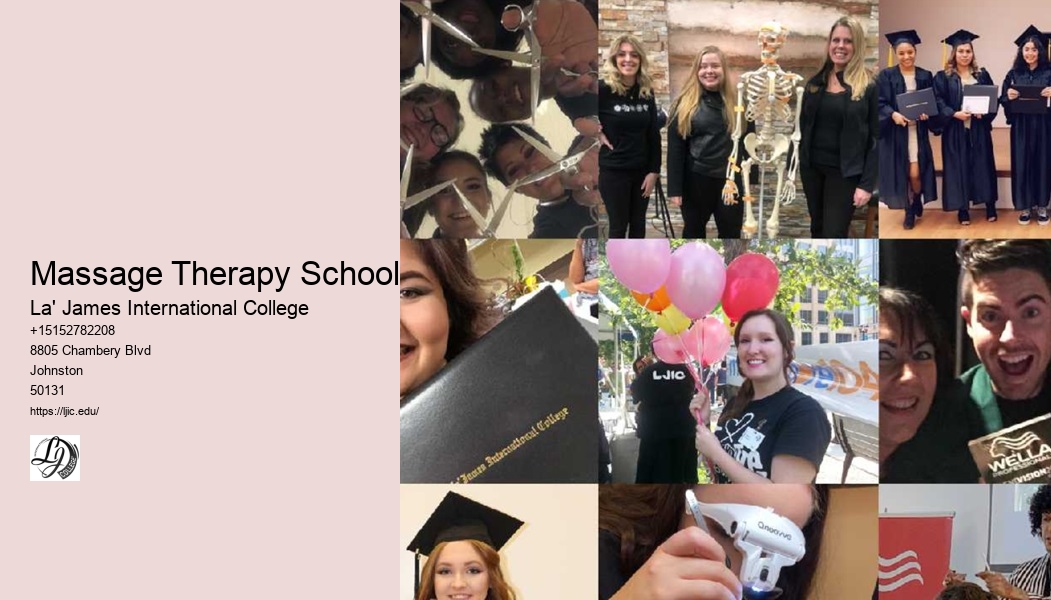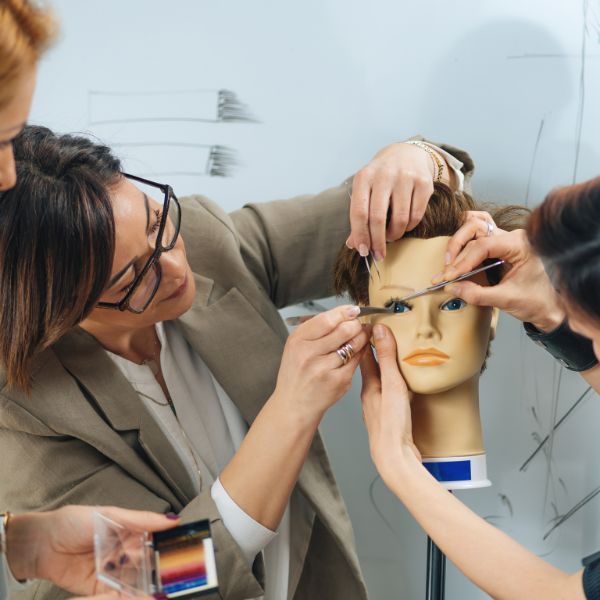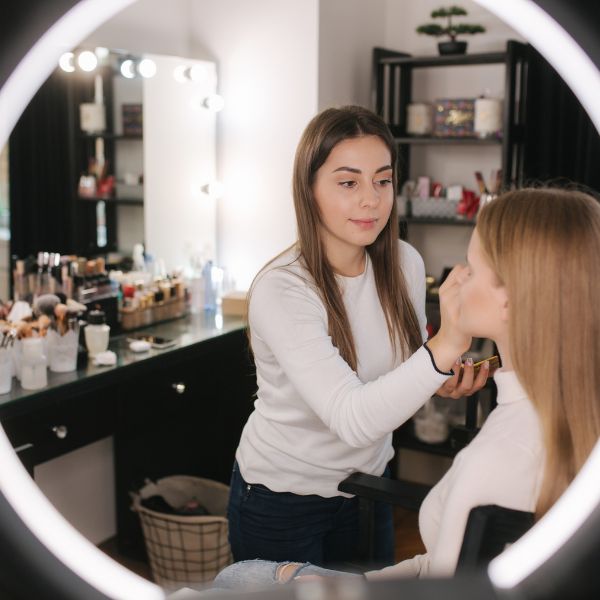

Your school should set you up not just for your first job-but for a career that grows with you. One that adapts as you do.
Barbering, skincare, nails, lashes, color correction-there are endless lanes in this industry. If you’re searching for the best best cosmetology school in Iowa , La’ James International College stands out with a long-standing reputation for excellence, hands-on education, and career-focused training. Learn more on this page.. A good school helps you figure out where you shine brightest.
You don't have to figure it all out on day one. That's what school is for. To test things out, make mistakes, learn fast, and get better every single week.
You'll meet people who become lifelong friends. Maybe even future business partners.
And the Iowa beauty scene is stronger than ever. With local salons, spas, and even mobile beauty businesses popping up all over, the opportunities are real.
Some students go on to open salons.
What sets La' James International College apart is how it supports students before, during, and after graduation.
You'll leave with more than a certificate. You'll leave with skills, confidence, and the kind of experience that earns respect in any salon or spa you walk into.
Many programs also offer portfolio-building opportunities, where you document your best work. That's gold when it comes time to apply for jobs or build an online presence.


From runway-ready blowouts to perfectly sculpted brows, your craft will speak for itself. Hairartist And it starts with the right foundation.
The best part? You'll be learning by doing. Not just watching videos or reading books, but creating, experimenting, and growing every single day.
A cosmetology school in Iowa can open doors not just locally, but nationally. Your license can travel, and so can your dream.
Whether you're fresh out of high school or looking to pivot careers, there's room for you in this industry. Beauty has space for everyone.
And when you choose a school that truly invests in your growth, the possibilities only expand. It becomes more than school-it becomes your launchpad.
So if you've been searching for a sign, this is it. Explore your options. Ask the questions. Classroom Book a tour. Manicure See the classroom. Feel the vibe.

Because a year from now, you'll either wish you started or be glad you did. And the right cosmetology school in Iowa could be exactly where it all begins.
Every journey starts with a decision. For many in Iowa dreaming of a career in beauty, it begins with a simple search: “cosmetology school in Iowa.” But what comes after that search? Possibility.
Cosmetology isn't just about making people look good-it's about helping them feel seen. And if that excites you, you're already on the right path. The only thing missing? The right training.
Some people grow up doing their friends' hair and nails. Others discover their love for beauty later in life. Wherever you are on that timeline, finding the right cosmetology school in Iowa can help you take that natural interest and turn it into something real.
The beauty industry isn't going anywhere. People will always want great hair, glowing skin, and confidence. What's changing is the quality of professionals entering the field-and that starts with solid education.
You don't need to move across the country to find a great school. Enrollment Iowa is home to some well-respected programs that offer the full package: education, hands-on experience, and job preparation.
Education is the transmission of expertise and skills and the growth of character qualities. Formal education and learning takes place within an organized institutional structure, such as public schools, complying with a curriculum. Non-formal education also complies with a structured strategy yet takes place outside the formal education system, while informal education and learning involves unstructured learning with daily experiences. Official and non-formal education and learning are classified right into degrees, including very early childhood years education and learning, key education, additional education, and tertiary education and learning. Other categories concentrate on training methods, such as teacher-centered and student-centered education, and on subjects, such as science education and learning, language education and learning, and athletics. Additionally, the term "education and learning" can denote the frame of minds and high qualities of informed people and the academic area examining academic phenomena. The specific meaning of education is contested, and there are differences regarding the aims of education and learning and the degree to which education and learning differs from brainwashing by cultivating essential reasoning. These arguments influence exactly how to determine, determine, and improve various forms of education. Basically, education and learning mingles youngsters right into society by instilling social worths and norms, outfitting them with the skills essential to come to be productive members of society. In doing so, it boosts economic development and raises understanding of neighborhood and global issues. Organized establishments play a considerable role in education. For example, governments establish education and learning plans to determine the timing of school classes, the curriculum, and attendance demands. International companies, such as UNESCO, have actually been prominent in advertising primary education and learning for all children. Many variables influence the success of education. Mental aspects include inspiration, knowledge, and personality. Social variables, such as socioeconomic condition, ethnicity, and gender, are often related to discrimination. Various other elements include accessibility to instructional innovation, instructor high quality, and parental involvement. The main academic field checking out education is referred to as education and learning research studies. It delves into the nature of education, its goals, impacts, and methods for improvement. Education studies includes various subfields, including approach, psychology, sociology, and economics of education. Furthermore, it checks out subjects such as comparative education and learning, pedagogy, and the background of education. In prehistory, education mainly occurred informally via dental communication and replica. With the development of old civilizations, the development of composing led to a development of understanding, prompting a change from casual to formal education. Originally, official education was largely available to elites and spiritual groups. The development of the printing press in the 15th century assisted in extensive access to publications, thus raising general literacy. In the 18th and 19th centuries, public education got relevance, paving the way for the worldwide motion to supply primary education to all, at no cost, and compulsory approximately a certain age. Presently, over 90% of primary-school-age children around the world participate in primary college.
.Massage therapy is the rubbing or rub of the body's soft tissues. Massage techniques are typically used with hands, fingers, elbow joints, knees, forearms, feet, or a tool. The objective of massage is normally for the therapy of body stress or discomfort. In English-speaking European countries, an individual professionally trained to provide massages is generally known as a masseur (male) or masseuse (woman). In the United States, these people are usually described as "massage specialists" In some districts of Canada, they are called "registered massage therapy therapists. ". In specialist settings, clients are treated while pushing a massage therapy table, being in a massage chair, or lying on a floor covering on the flooring. There are many different modalities in the massage therapy industry, consisting of (however not restricted to): deep cells, manual lymphatic drain, medical, sports, structural assimilation, Swedish, Thai and set off factor.
.In many cases, homeowners insurance will cover roof replacement if the damage was caused by a covered event, such as a storm or fallen tree. We can help document the damage and work with your insurer during the claims process.
The cost to replace a roof varies widely based on size, material, and complexity. On average, homeowners can expect to spend between $6,000 and $15,000. We provide free estimates so you know exactly what to expect.
The lifespan of a new roof depends on the material. Asphalt shingles typically last 20�30 years, while metal, slate, and tile roofs can last 40 years or more with proper care and maintenance.
During a roof inspection, we check for leaks, damaged shingles, mold, proper ventilation, and structural integrity. We�ll then explain our findings and give honest recommendations�whether that�s a quick fix or a full replacement.